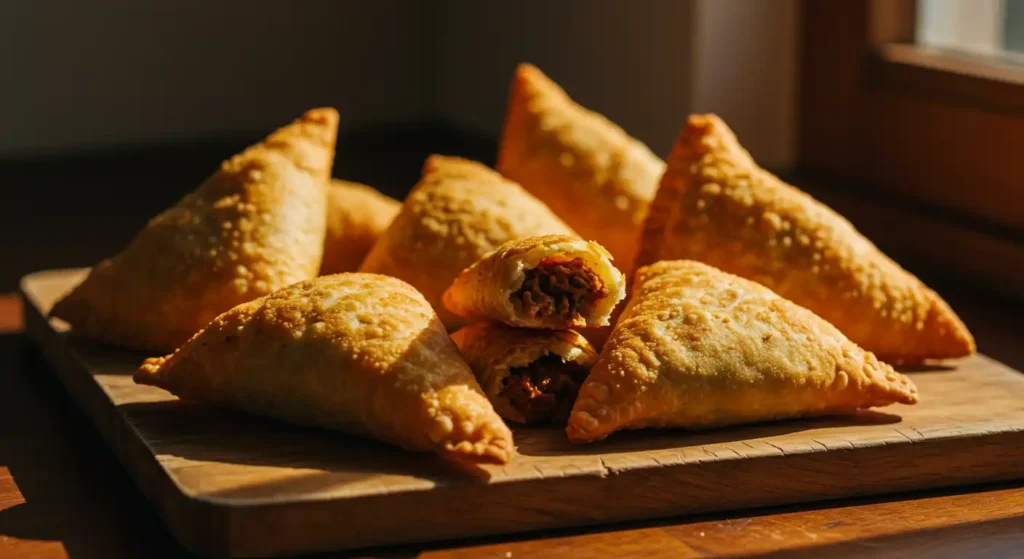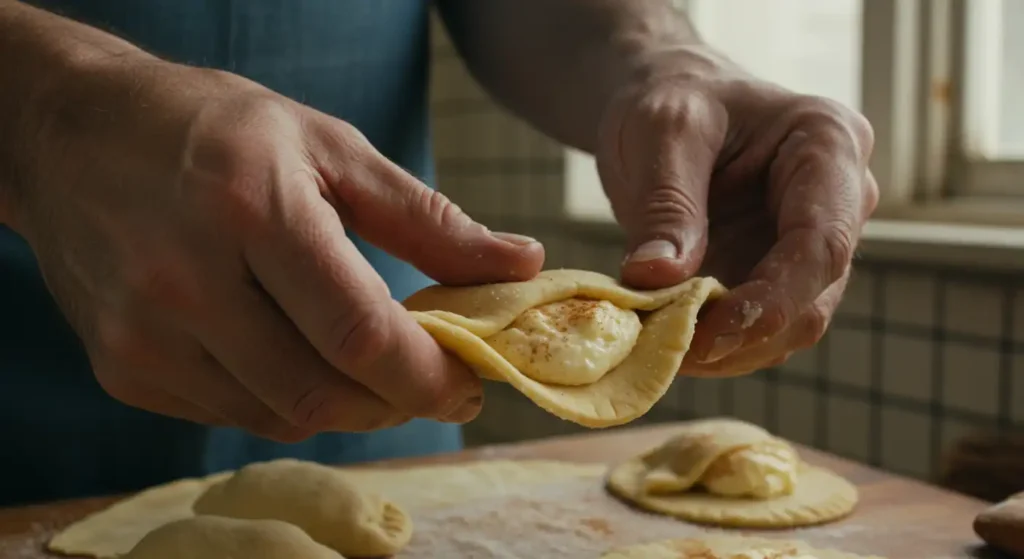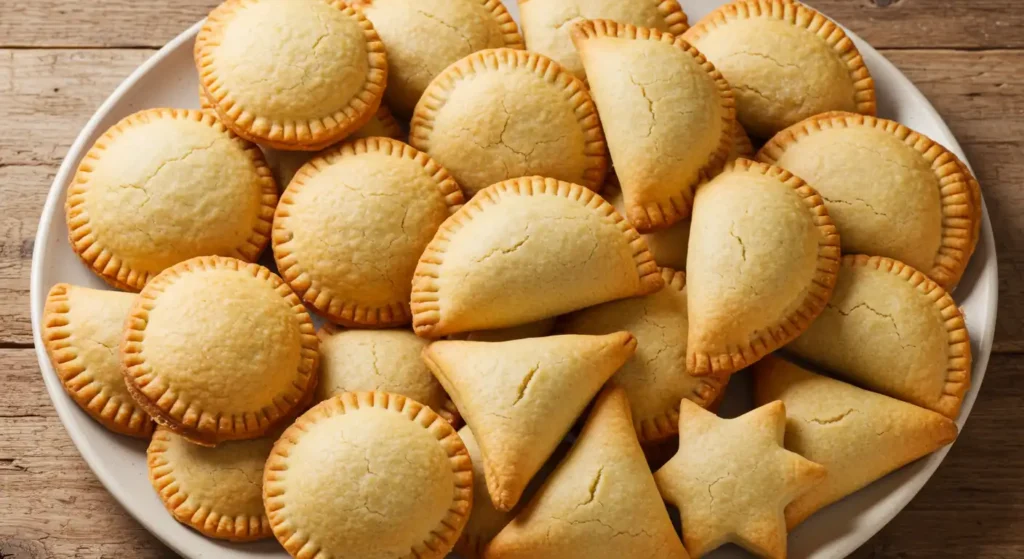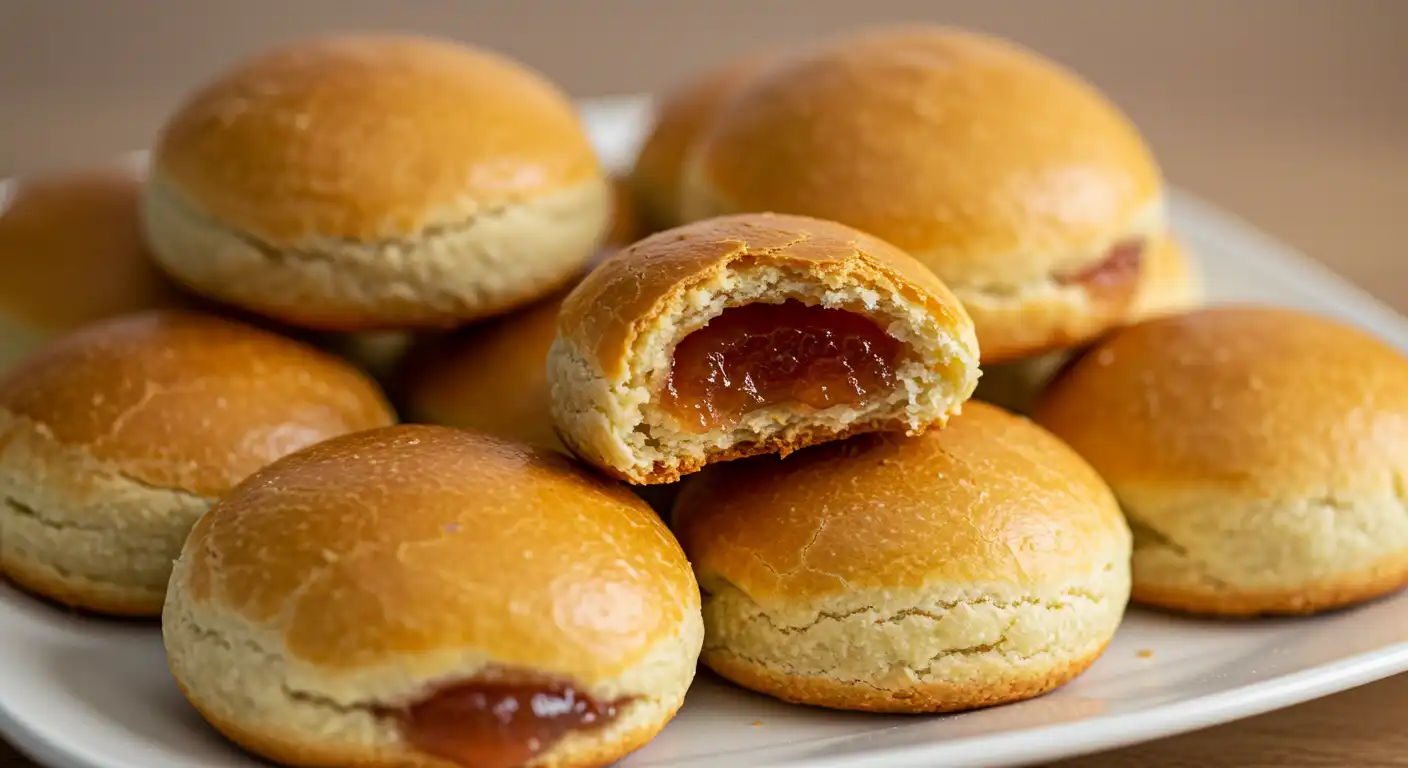A Sweet Introduction: The Curious World of Pastelitos
Have you ever wondered, what shapes are pastelitos? These flaky, delectable pastries have taken many forms over centuries, delighting taste buds with their vibrant fillings and buttery crusts. Whether round, triangular, or square, pastelitos are an edible canvas of creativity. Let’s dive into their world, learn about their shapes, and even find ways to create your own!
Why People Love Pastelitos
- Cultural Significance: They’re a symbol of celebration in many countries.
- Flavor Variety: Both sweet and savory options cater to every palate.
- Perfect for Sharing: Their small size makes them an ideal party treat.
The Art of Shaping Pastelitos
Traditional Shapes of Pastelitos
Pastelitos come in a variety of shapes, often influenced by cultural traditions and regional preferences:
Why Shape Matters
Shapes aren’t just about aesthetics—they serve practical purposes that enhance the pastelito experience:
- Filling Distribution: Specific shapes, like half-moons or rectangles, are ideal for evenly holding and sealing fillings, ensuring every bite is satisfying.
- Ease of Handling: Compact designs, such as triangles, are perfect for on-the-go snacks, making them a convenient choice for busy days.
- Visual Appeal: Creative shapes, like stars or hearts, add a playful element, making pastelitos a standout treat at parties and celebrations.

Quick Joke: Why did the triangle pastelito go to school? Because it wanted to get a sharp edge! 😉
So, whether it’s practicality or pizzazz, the shape of a pastelito plays a significant role in its appeal and functionality!
The History Behind Pastelito Shapes
Pastelitos have a rich history that reflects the cultural diversity of the regions where they are popular. Originating from Spanish influences, their shapes and fillings have evolved over time to incorporate indigenous and local customs. For example:
- Caribbean Islands: The half-moon shape is a nod to practicality, often paired with tropical fillings like guava and mango, which celebrate the region’s abundant fruit harvests.
- Latin America: Rectangular or triangular pastelitos highlight bold, savory fillings such as spiced meats and cheese, reflecting the hearty culinary traditions of the region.
- Spain: Intricate, smaller pastelitos mirror the artistry of Spanish pastries, often featuring delicate designs and rich almond or citrus flavors.
This evolution of pastelitos across cultures demonstrates how food adapts to and celebrates the unique flavors and traditions of each community.
Evolution Over Time
The innovation of pastelito shapes hasn’t stopped. Modern chefs experiment with:
- Heart Shapes: Popular during Valentine’s Day.
- Animal Shapes: Fun for kids’ parties.
- Geometric Designs: Perfect for upscale dining experiences.
Understanding their history deepens the appreciation for these delightful treats.
How to Shape Your Pastelito shapes at Home
Creating pastelitos is easier than you think. All you need is dough, your favorite fillings, and a bit of patience.
Prep Time: 15 minutes
Cook Time: 25 minutes
Servings: 8

Step-by-Step Guide:
- Prepare the Dough: Roll out your dough to an even thickness.
- Choose Your Shape:
- Use a circular cutter for round pastelitos.
- Slice with a knife for squares or triangles.
- Add the Filling: Place a dollop of filling in the center.
- Seal the Edges: Use a fork to crimp the edges and prevent leaks.
- Bake or Fry: Cook until golden and flaky.
Creative Filling Ideas
Pastelitos are incredibly versatile, allowing you to experiment with a variety of fillings. Here are some ideas:
Sweet Fillings:
- Guava and Cheese: First, we start with a tropical classic that seamlessly blends the tartness of guava with the creaminess of cheese, offering a delightful sweet and savory combination.
- Dulce de Leche: Next, for caramel lovers, this gooey, rich filling pairs beautifully with the crisp, flaky layers of a pastelito, making it an irresistible choice.
- Nutella and Banana: Meanwhile, for those seeking a modern twist, this combination balances the rich, chocolatey flavor of Nutella with the natural sweetness of banana for a contemporary favorite.
- Apple Cinnamon: Similarly, apple cinnamon offers a cozy, nostalgic treat, like a bite-sized apple pie filled with tender apple chunks and warm spices.
- Mixed Berries with Cream: In contrast, for a vibrant and tangy option, this filling combines fresh or frozen berries with a hint of sweetened cream cheese, creating a tangy yet creamy delight.
- Chocolate and Peanut Butter: Finally, for bold flavor enthusiasts, this ultimate indulgence pairs the richness of chocolate with the creamy decadence of peanut butter.
- In conclusion, each of these fillings adds its own unique character, making pastelitos versatile enough to suit any occasion or craving!
Savory Fillings:
- Spiced Beef: To begin, this hearty and satisfying filling is often seasoned with a rich blend of cumin, paprika, and garlic, creating a robust flavor profile perfect for meat lovers.
- Shredded Chicken: Similarly, shredded chicken offers a comforting and versatile option, perfectly seasoned with spices or perhaps elevated by a zesty hint of lime for added brightness.
- Spinach and Feta: On the other hand, for those seeking a lighter, vegetarian choice, spinach and feta create a delicious balance that complements the buttery layers of the pastry.
- Mushroom and Ricotta: Meanwhile, for a gourmet experience, the earthy notes of mushrooms blend seamlessly with the creamy texture of ricotta, making it an excellent choice for elegant dinner parties.
- Chorizo and Potato: Furthermore, this savory and slightly spicy option combines the smoky flavor of chorizo with the heartiness of potatoes, offering a filling and flavorful bite.
- Caramelized Onion and Goat Cheese: In contrast, for those with a taste for bold and tangy flavors, caramelized onion pairs beautifully with the creamy, tangy notes of goat cheese, delivering a sophisticated experience.
- Vegetarian Curry: Finally, for a globally inspired twist, this filling features spiced lentils, chickpeas, or mixed vegetables, bringing vibrant flavors and a touch of adventure to your pastelito platter.
- Altogether, these savory fillings showcase the versatility of pastelitos, allowing you to explore a world of flavors with every bite.
Innovative Ideas:
- Seasonal Fillings: Incorporate pumpkin spice in the fall or lemon curd in the spring.
- Fusion Fillings: Try blending cuisines, such as teriyaki chicken or Mediterranean-inspired sun-dried tomatoes and olives.
- Mini Dessert Pastelitos: Use fillings like marshmallow fluff and chocolate chips to create s’more-inspired bites.
Tips for Filling Combinations:
- Balance Flavors: Pair sweet fillings with slightly salty dough for contrast.
- Test Fillings: Try a small batch to ensure the flavors and consistency hold up during baking or frying.
Pro Tips:
- Use a pastry brush to coat the edges with egg wash before sealing. This ensures a golden, flaky crust that’s both beautiful and delicious.
- For wet fillings, add a small amount of cornstarch or flour to prevent leaks.
- Chill your fillings before using them to avoid melting or spreading during the cooking process.
Mix and match these fillings with various shapes to create your signature pastelitos! For example, pair the classic guava and cheese with half-moon shapes for a traditional look, or try Nutella and banana in star shapes for a fun, modern twist. For a cozy vibe, combine the apple cinnamon filling with a rectangular shape reminiscent of mini hand pies, while mixed berries with cream could shine in intricate lattice-style designs.
The possibilities are truly limitless, allowing you to customize both the flavor and presentation. Experiment boldly, and let your creativity turn pastelitos into a memorable treat. With every bite, you’re guaranteed to delight your guests or simply treat yourself to something special!
Nutritional Information
| Nutrient | Amount (Per Serving) |
|---|---|
| Calories | 250 |
| Fat | 15g |
| Carbohydrates | 20g |
| Protein | 5g |
| Fiber | 1g |
| Cholesterol | 30mg |
| Sodium | 180mg |
| Sugar | 10g |
| Saturated Fat | 8g |
| Trans Fat | 0g |
The Role of Ingredients in: What shapes are pastelitos
Each ingredient in pastelito dough contributes to its ability to hold intricate shapes. High-fat content ensures flakiness, while well-kneaded dough prevents cracking during baking or frying. The type of flour you choose—whether all-purpose, pastry, or gluten-free—significantly affects texture and pliability, which in turn influences the ability to create perfect pastelito shapes.
Regional Variations in Pastelito Shapes
Different regions put their own unique twist on pastelito shapes, showcasing the diversity of cultural preferences and local ingredients.
For instance, in the Caribbean Islands, pastelitos are typically crafted into half-moon shapes and filled with tropical fruit mixtures like guava or mango, highlighting the region’s love for vibrant, sweet flavors.
Meanwhile, in Mexico, pastelitos take on a different form, as they are known for being larger and rectangular. These are often packed with bold, spiced fillings and enjoyed as street food, reflecting Mexico’s dynamic culinary culture.
On the other hand, Spain prefers smaller, intricately designed pastelitos, which are commonly served as tapas or paired with coffee, emphasizing their role in social and leisurely settings.
Overall, these regional variations not only illustrate distinct tastes but also highlight how pastelitos adapt to the ingredients and traditions of each locale.
Tools and Techniques for Perfect Shaping
Achieving flawless pastelito shapes requires the right tools and techniques:
- Pastry Cutters: Available in various shapes for easy, uniform cutting.
- Rolling Pins with Guides: Ensure consistent dough thickness, vital for even baking or frying.
- Crimping Tools: For decorative and secure edges.
- Pastry Stamps: Ideal for festive shapes like stars or hearts.
Using these tools not only makes shaping easier but also adds a professional touch to homemade pastelitos.
Pastelitos as a Culinary Tradition : What shapes are pastelitos
Pastelitos are more than just pastries; they’re a cherished tradition in many households:
- Family Bonding: Shaping and filling pastelitos often brings families together, especially during holidays.
- Passed-Down Recipes: Each family may have its own unique dough or filling recipe.
- Cultural Celebrations: In many countries, pastelitos are a staple for weddings, birthdays, and festivals.
Making pastelitos isn’t just cooking—it’s preserving culture.
Creative Presentation Ideas for Pastelitos
The visual appeal of pastelitos can elevate them from snacks to show-stopping Desserts shine even brighter with thoughtful presentation. Here are some tips for showcasing pastelitos:
Plating: Arrange pastelitos in an eye-catching circular pattern, complemented by colorful garnishes like fresh mint leaves, edible flowers, or powdered sugar for added flair.
Dipping Sauces: Enhance the flavor experience by serving sweet pastelitos with decadent options like chocolate, caramel, or berry sauces, while pairing savory ones with bold, spicy dips or tangy aiolis.
Themed Shapes: Add a personal touch by customizing pastelito shapes to match the occasion—for example, heart shapes for Valentine’s Day, stars for Christmas, or even thematic designs for birthdays or cultural celebrations.
With these thoughtful presentation ideas, a beautifully arranged pastelito platter is sure to impress any guest and elevate the dessert table.
Pastelitos in Modern Cuisine
Modern chefs and bakers have brought pastelitos into contemporary cuisine by
Experimenting with pastelitos opens up endless opportunities to create exciting and memorable variations. Here are some innovative ideas to inspire creativity:
Fusion Fillings: Combine unexpected ingredients for bold flavor pairings, such as kimchi and cheese for a savory kick or chocolate infused with chili for a sweet and spicy twist.
Gourmet Ingredients: Elevate pastelitos by incorporating premium ingredients like truffle oil, saffron, or smoked sea salt, adding a sophisticated touch to traditional recipes.
Deconstructed Versions: Reimagine pastelitos by serving them as open-faced pastries or layered desserts, allowing each element to shine while offering a modern presentation.
These inventive approaches make pastelitos an exciting option for adventurous foodies, transforming them into unique culinary creations.
Pairing Pastelitos with Drinks and Sides
The right accompaniments can enhance the pastelito experience:
- Sweet Pastelitos: Pair with strong espresso, cinnamon tea, or even a frothy milkshake.
- Savory Pastelitos: Complement with tangy salsas, creamy guacamole, or a refreshing cucumber salad.
- Brunch Combos: Serve pastelitos alongside scrambled eggs and fresh fruit for a balanced meal.
Experimenting with pairings adds depth to your pastelito enjoyment.
Troubleshooting Common Pastelito Challenges
Even experienced cooks face challenges when making pastelitos. Here’s how to solve some common issues:
- Cracking Dough: Ensure proper hydration and rest time for the dough.
- Leaky Fillings: Use thickened fillings and avoid overfilling the dough.
- Uneven Cooking: Maintain consistent dough thickness and rotate trays during baking.
- Not Flaky Enough: Use chilled butter and avoid overworking the dough.
Mastering these fixes guarantees perfect pastelitos every time.

Conclusion: Why the Pastelito shapes Matters
What shapes are pastelitos? The answer lies in tradition, practicality, and creativity. Whether you’re biting into a triangle filled with spiced meat or a round pastry bursting with guava, the shape adds to the magic.
So, next time you enjoy a pastelito, take a moment to appreciate the art behind its form. And if you’re feeling adventurous, try shaping your own at home!
FAQs : What shapes are pastelitos
What Are Pastelitos Made Of?
Pastelitos are made from a simple pastry dough, often enriched with butter or shortening, and filled with sweet or savory ingredients. The dough’s flakiness comes from alternating layers of fat and flour, ensuring a melt-in-your-mouth experience.
What Ethnicity Makes Empanadas?
Empanadas, a close cousin of pastelitos, are made by many ethnicities, including Spanish, Latin American, and Filipino cultures. They share similarities in technique but differ in fillings and dough styles, with pastelitos leaning toward a lighter, flakier crust.
How Do You Keep Pastelitos Fresh?
To keep pastelitos fresh, store them in an airtight container. Refrigerate if they contain perishable fillings, and reheat in an oven for crispiness. For longer storage, pastelitos can be frozen after baking and reheated in a preheated oven for 10-15 minutes.
Can You Make Gluten-Free Pastelitos?
Absolutely! Replace regular flour with a gluten-free alternative, and adjust the liquid content as needed. Gluten-free pastelito dough can be just as flaky with proper technique.
What’s the Difference Between Pastelitos and Empanadas?
While both are pastries, pastelitos are usually lighter and flakier, with more emphasis on creative shapes and sweet fillings.
